Last updated: February 14, 2025
Article
Julius Sip In
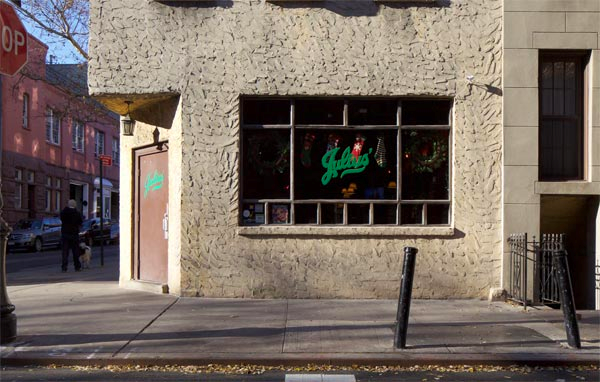
Photograph by Christopher D. Brazee, courtesy of New York State Historic Preservation Office
Before the Stonewall Riots, there was the Julius’ Bar “Sip-In”
During the 1960s, bars in New York City often refused service to LGB patrons, under the threat of raids by the New York Police Department. New York’s State Licensing Agency, the entity that regulated liquor licensing, had the power to revoke any license if they found that the establishment had the potential to house “disorderly conduct.” According to the SLA, “disorderly conduct” included any intimate encounters between two men[1]. Although courts in New York had barred the practice of penalizing establishments for serving gay patrons in the late ‘50s, many places continued to refuse service with fears of losing their liquor licenses as gay patrons were seen as inherently disorderly[2]. As a result, it became harder and harder for members of the burgeoning LGB community in NYC to find a place where they could safely congregate in public.
On April 21, 1966, four men walked into a tavern called Julius’ Bar in Greenwich Village and ordered drinks—upon learning the men were gay, the bartender put his hand over a glass and denied service. Thus began the infamous “sip-in,” inspired by the sit-in demonstrations during the Civil Rights movement.
John Timmins, Dick Leitsch, Craig Rodwell, and Randy Wicker were all part of the Mattachine Society, an early American gay rights group. The Society was founded in 1950 and acted as a social group where members could gather and talk about the discriminatory policies that plagued their community at the time. The group grew quickly, with thousands of members across the country in just a few years[3]. The New York City chapter, headed by Leitsch, actively campaigned for equal rights by organizing demonstrations and lectures.
The day didn’t quite start off they way the group was expecting. The first bar they were planning to visit, the Village Bar on St. Mark’s Place, had gotten wind of the demonstration and closed up shop early, and the next two bars they visited, Howard Johnson’s and Waikiki, both served the group without issue. They finally found what they were looking for at the Julius and immediately filed a complaint against the SLA for “unconstitutionally discriminating against homosexuals in violation of the First and Fourteenth amendments[4],” taking the issue to court.
The group wanted to challenge the widespread practice of banning LGB patrons from bars in NYC. While some may consider the tactics and goals of the Mattachine Society to be conservative today, at the time, this was viewed as radical. The Society wanted to target this law in particulate because (quoted from Dick Leitsch Stonewall Oral History Project), “We will never be able to have a gay organization unless we have a place to hang out.”
The group invited reporters from the Village Voice, the New York Times, and the New York Post along for the “sip-in.” Lucy Komisar, reporter for the Voice provided a detailed description of the day in her story, noting that, “It was a challenge to one of the remaining citadels of bias, and a citadel backed up by law, at that.” Thomas A. Johnson also covered the event in a New York Times article three days later, albeit in a less praising tone. In the ensuing court case, the court declared that people have the right to peacefully assemble and thus, the SLA cannot prevent gay people from gathering in bars. This prompted the SLA chairmen to confirm that there is nothing in the state law that bans service to gay patrons and New York’s Commission on Human Rights also added that one cannot be denied service simply for being gay[5].
While the “sip-in” protest was small in scale and eventually dwarfed by the Stonewall Riots three years later, it marked the beginning of the larger LGB movement. The demonstration and court case victory by no means ended the harassment of gay men in bars or police entrapment tactics, but Leitsch later told NPR in 2008 that, “the importance of this, I think, was the until this time gay people had never really fought back. We just sort of take in everything passively, didn’t do anything about it. And this time we did it, and we won.”
In 2016, the Julius was entered into the National Register of Historic Places and received a commemorative plaque. Wicker and Komisar, the Village reporter, both were in attendance at the plaque unveiling.
[1] https://www.history.com/news/gay-rights-sip-in-julius-bar
[2] https://www.nytimes.com/2021/06/29/nyregion/nj-gay-bars-liquor-laws-.html
[3] https://time.com/longform/mattachine-society/
[4] Stonewall, Martin Duberman, p. 142
[5] https://www.history.com/this-day-in-history/sip-in-gay-rights-takes-place-at-julius-bar-in-nyc
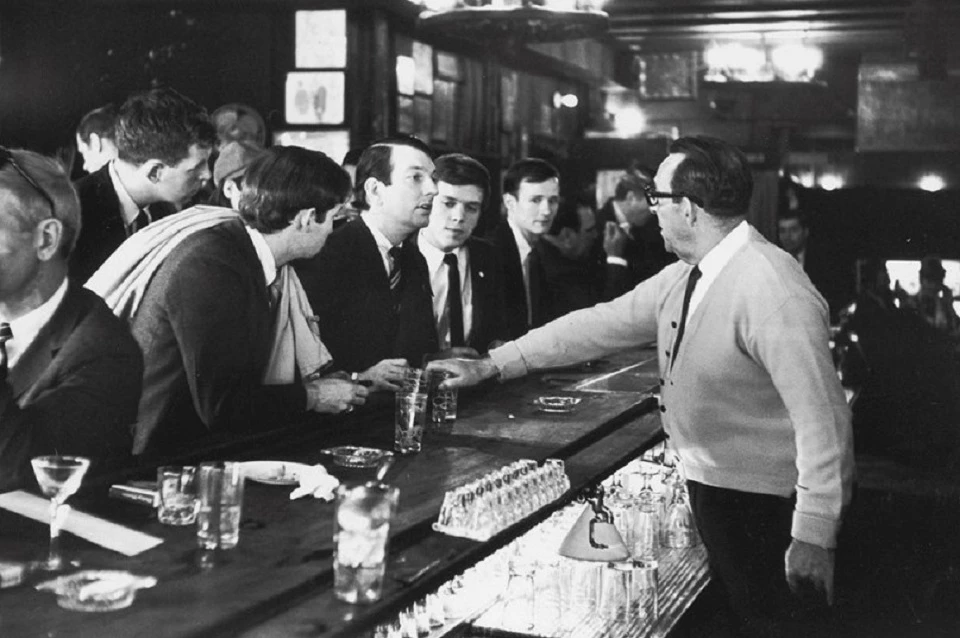
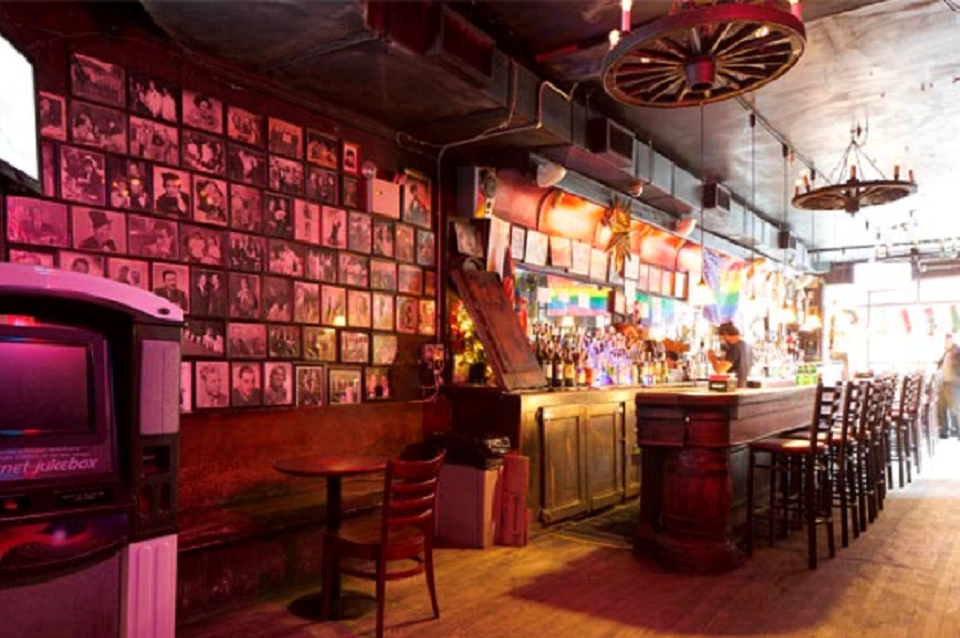
Left image
Credit: Photo by Fred W. McDarrah/Getty Images
Right image
Credit: Photograph by Christopher D. Brazee, courtesy of New York State Historic Preservation Office
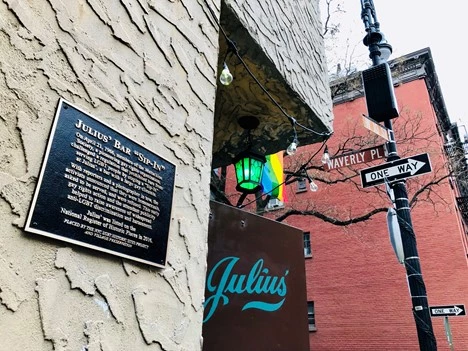
NPS Photo
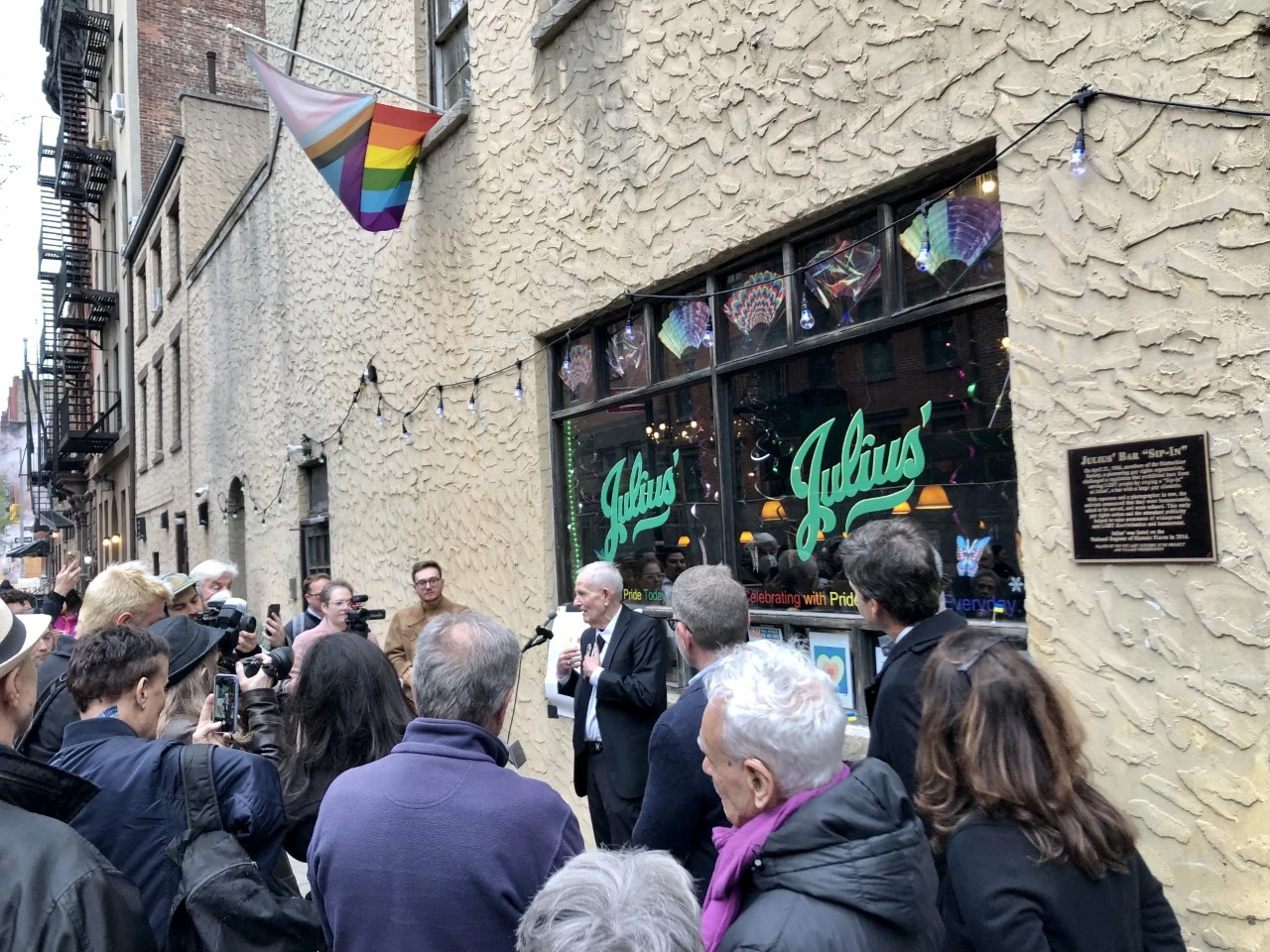
NPS Photo
